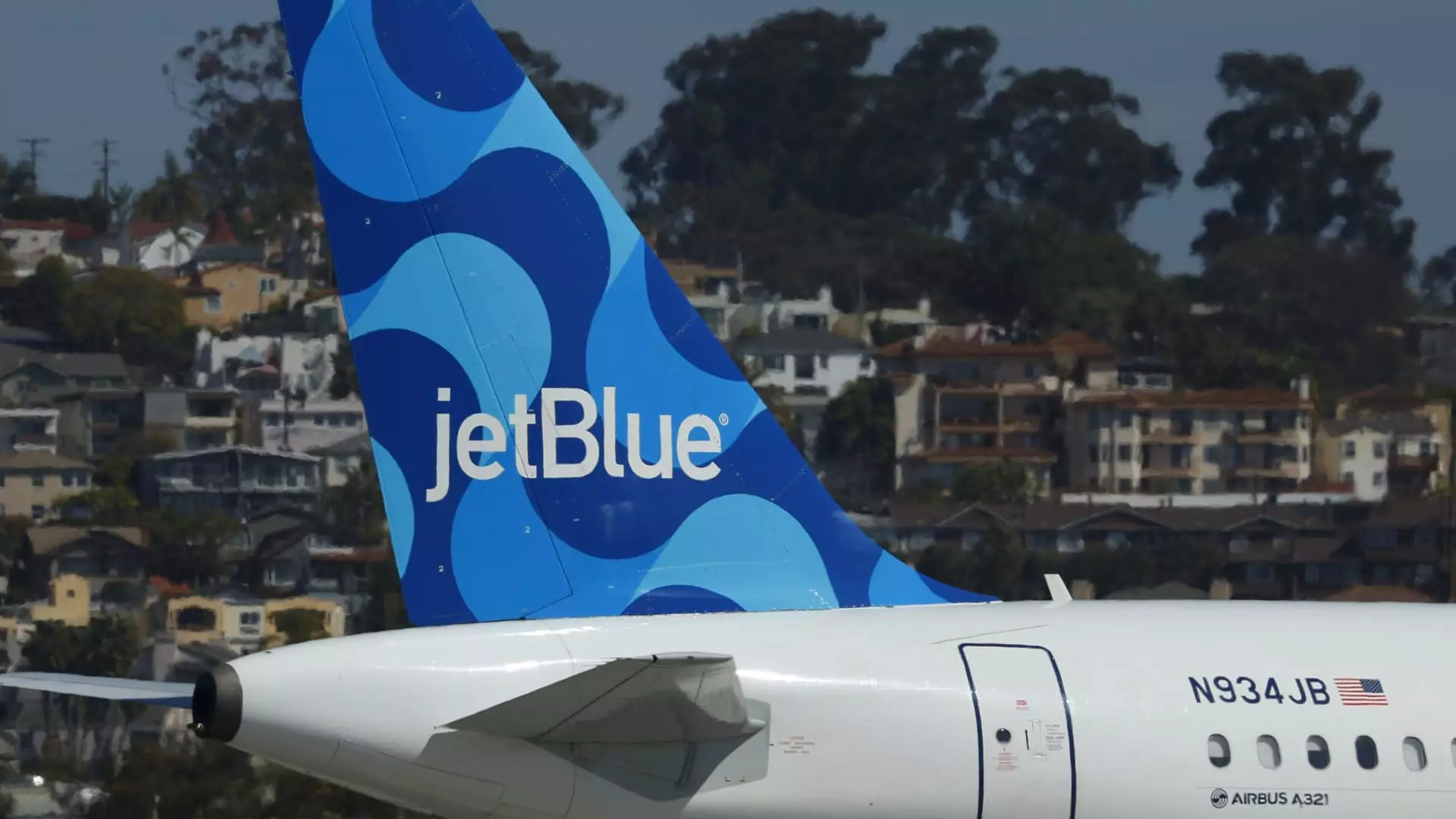JetBlue Airways faces a daunting challenge in the current airline industry landscape, navigating a marketplace characterized by diminished travel demand and uncertain financial prospects. CEO Joanna Geraghty recently acknowledged to staff that achieving break-even operating margins this year seems increasingly far-fetched. This admission, although candid, underscores a significant issue that many airlines grapple with today: the volatility of consumer demand in the post-pandemic era. After the initial optimism surrounding a recovery in air travel, it appears the anticipated surge has been tempered by economic realities. The revelation that bookings have not only faltered but are setting a precedent for lower fares illustrates a substantial shift in customer behavior, one that JetBlue must adapt to survive.
Strategic Cost-Cutting Measures
In an effort to address the dismal outlook, JetBlue is implementing various cost-cutting measures. The reduction of off-peak flights and the realignment of unprofitable routes are steps that suggest a reevaluation of operational efficiency. However, such measures often lead to a paradox; while trimming capacity may yield immediate financial relief, it risks alienating loyal customers who depend on consistent service. Moreover, the airline’s decision to park older Airbus A320 jets rather than invest in refurbishments reflects a cautious approach, yet it simultaneously raises questions about JetBlue’s long-term commitment to fleet modernization. Such pivotal decisions can have lasting ramifications on the carrier’s competitive edge.
A Cautious Outlook for Growth
With previous forecasts for 2025 now in the rearview mirror due to an unpredictable economic climate, JetBlue’s trajectory appears to be navigating uncharted waters. The airline’s executives express an optimistic hope for recovery, yet this optimism feels precarious. Borrowing cash to sustain operations is a double-edged sword; it provides temporary liquidity but adds to long-term debt burdens. Furthermore, the halted acquisition of Spirit Airlines and the canceled partnership with American Airlines have only compounded JetBlue’s challenges. These setbacks expose the frailty of a business model that relied heavily on strategic alliances for growth in a fiercely competitive market.
Inflation and Fare Dynamics
The recent decrease in airfares—down by 7.3% compared to last year—highlights not only the impact of inflation but also the airline industry’s struggle to maintain profitability. While this decline might superficially seem beneficial for consumers, it signals deeper issues within an industry struggling to find its footing. JetBlue is caught in the crosshairs of a paradox: the desire to attract price-sensitive travelers clashes with the need to maintain healthy margins. In this context of economic uncertainty, pricing strategies will be critical, but they must be executed with careful consideration to avoid long-term consequences.
Investing in Consumer Experience Amidst Uncertainty
Despite the economic strain, JetBlue’s ongoing investments in premium-class services and new airport lounges reveal a commitment to enhancing the customer experience. This commitment is laudable; however, it raises critical concerns about priorities. Should JetBlue be focusing on luxury amenities when foundational financial stability remains elusive? Attempting to lure high-spending passengers can invigorate revenue, yet neglecting the broader passenger base may lead to alienation of existing customers. Balancing these competing interests is a crucial task for Geraghty as she leads JetBlue through this tumultuous time.
The Road Ahead: A Leadership Challenge
Joanna Geraghty’s leadership will be pivotal as JetBlue strives to regroup after this tumultuous period. Her determination to fill key positions, particularly for the recent partnership with United Airlines, shows an awareness of the importance of collaboration. The emphasis on creating new opportunities amid challenges could be the differentiator that sets JetBlue apart. However, this must be balanced with the realities of a transforming airline landscape.
As JetBlue hunkers down for a challenging year ahead, it must retain customer loyalty while also innovating within financial constraints. The future of air travel will depend on adaptability, customer trust, and the ability to navigate external economic pressures while keeping the airline’s core mission in sight. In an industry burdened by unpredictability, JetBlue’s journey will undoubtedly be a testament to resilience and strategic foresight, or—a cautionary tale of what happens when adaptability falters amidst the tides of change.


Leave a Reply